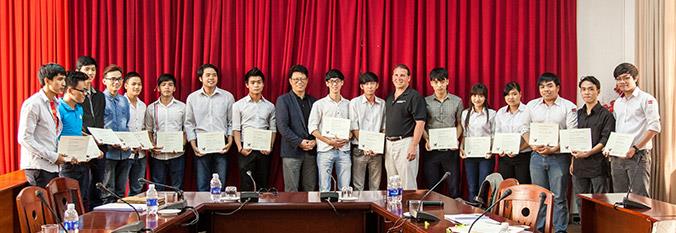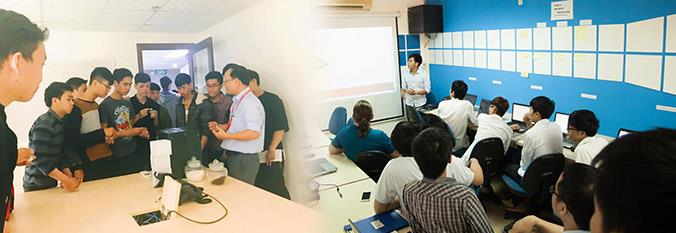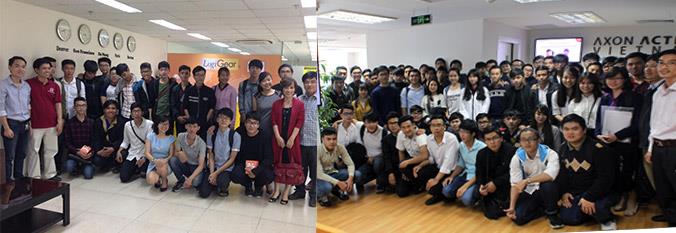Competitive dimensions in Operation Management
The major competitive dimensions that form the competitive position of a firm include following:
• Price:make the product or deliver the service cheap.
Within every industry, there is usually a segment of the market that buys solely on the basis of low cost. To successfully compete in this niche, a firm must be the low-cost producer, but even this does not always guarantee profitability and success.
Products and services sold strictly on the basis of cost are typically commodity-like; in other words, customers cannot distinguish the product or service of one firm from those of another. This segment of the market is frequently very large, and many companies are lured by the potential for significant profits, which they associate with the large unit volumes. As a consequence, however, competition in this segment is fierce—and so is the failure rate. After all, there can be only one low-cost producer, who usually establishes the selling price in the market.
Price, however, is not the only basis on which a firm can compete. Other companies, such as BMW, seek to attract those who want higher quality—in terms of performance, appearance, or features—than that available in competing products and services, even though accompanied by a higher price.
• Quality:make a great product or deliver a great service.
There are two characteristics of a product or service that define quality: design and process quality.
- Design quality relates to the set of features the product or service contains. This relates directly to the design of the product or service. Obviously a child’s first two-wheel bicycle is of significantly different quality than the bicycle of a world-class cyclist. The goal in establishing the proper level of design quality is to focus on the requirements of the customer.
- Process quality is critical because it relates directly to the reliability of the product or service. Regardless of whether the product is a child’s first two-wheeler or bicycle for an international cyclist, customers want products without defects. Thus, the goal of process quality is to produce defect-free products and services.
• Delivery speed:make the product or deliver the service quickly
In some markets, a firm’s ability to deliver more quickly than its competitors is critical. A company that can offer an on-site repair service in only 1 or 2 hours has a significant advantage over a competing firm that guarantees service only within 24 hours.
• Delivery reliability:deliver it when promised
For an automobile manufacturer, it is very important that its supplier of tires provide the needed quantity and types for each day’s car production. If the tires needed for a particular car are not available when the car reaches the point on the assembly line where the tires are installed, the whole assembly line may have to be shut down until they arrive.
For a service firm such as Federal Express, delivery reliability is the cornerstone of its strategy.
• Coping with changes in demand:change its volume.
When demand is strong and increasing, costs are continuously reduced due to economies of scale, and investments in new technologies can be easily justified.
When demand decreases may require many difficult decisions about laying off employees and related reductions in assets. The ability to effectively deal with dynamic market demand over the long term is an essential element of operations strategy.
• Flexibility and new product introduction speed:change it
Flexibility refers to the ability of a company to offer a wide variety of products to its customers. An important element of this ability to offer different products is the time required for a company to develop a new product and to convert its processes to offer the new product.
• Other product –specific criteria
- Technical liaison and support.
- Meeting a launch date
- Supplier after-sale support.
- Environmental impact.
- Other dimensions
Người đăng: Huỳnh Linh Lan
» Tin mới nhất:
- Cách GHI – ĐỌC dữ liệu từ tệp tin trong ngôn ngữ Java (18/12/2024)
- Những Website Check Lỗi Ngữ Pháp Tiếng Anh Chất Lượng (18/05/2024)
- The writing process and assessment (18/05/2024)
- Những kinh nghiệm làm đồ án dành cho sinh viên kiến trúc (18/05/2024)
- Quyết định đầu tư chứng khoán và các mô hình nghiên cứu (18/05/2024)
» Các tin khác:
- Thư tín dụng (18/08/2016)
- KHỞI SỰ KINH DOANH THÀNH CÔNG (18/08/2016)
- PHƯƠNG THỨC THANH TOÁN TÍN DỤNG CHỨNG TỪ (18/08/2016)
- Văn hóa tuyển dụng của người Nhật (18/08/2016)
- Những đặc điểm của một quyết định tốt (18/08/2016)
- Mỹ và Microsoft (18/08/2016)
- Mức tối ưu của các quy định xã hội (18/08/2016)
- Bí quyết để tổ chức một cuộc họp hiệu quả (17/08/2016)
- Cân bằng cuộc sống và công việc... (17/08/2016)
- NHỮNG PHONG CÁCH LÃNH ĐẠO (17/08/2016)













